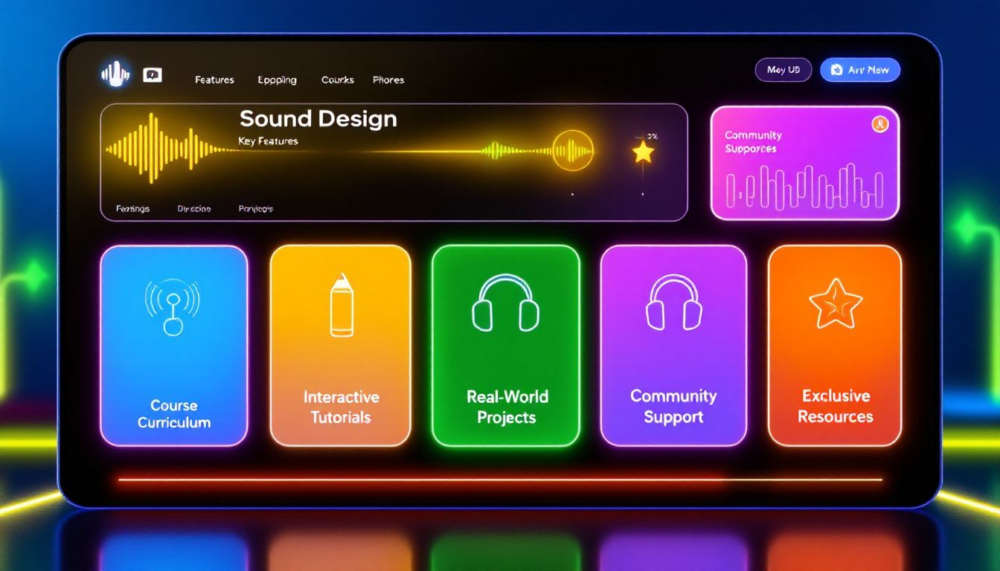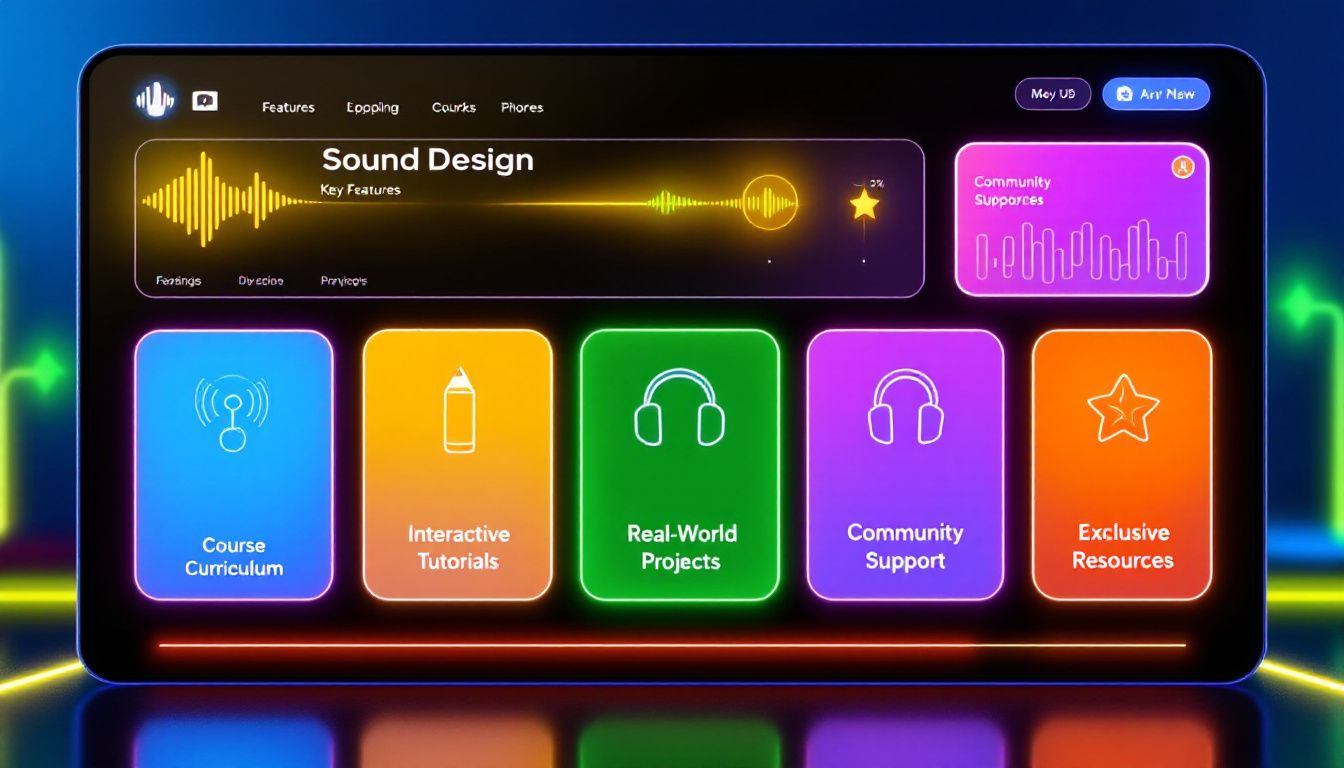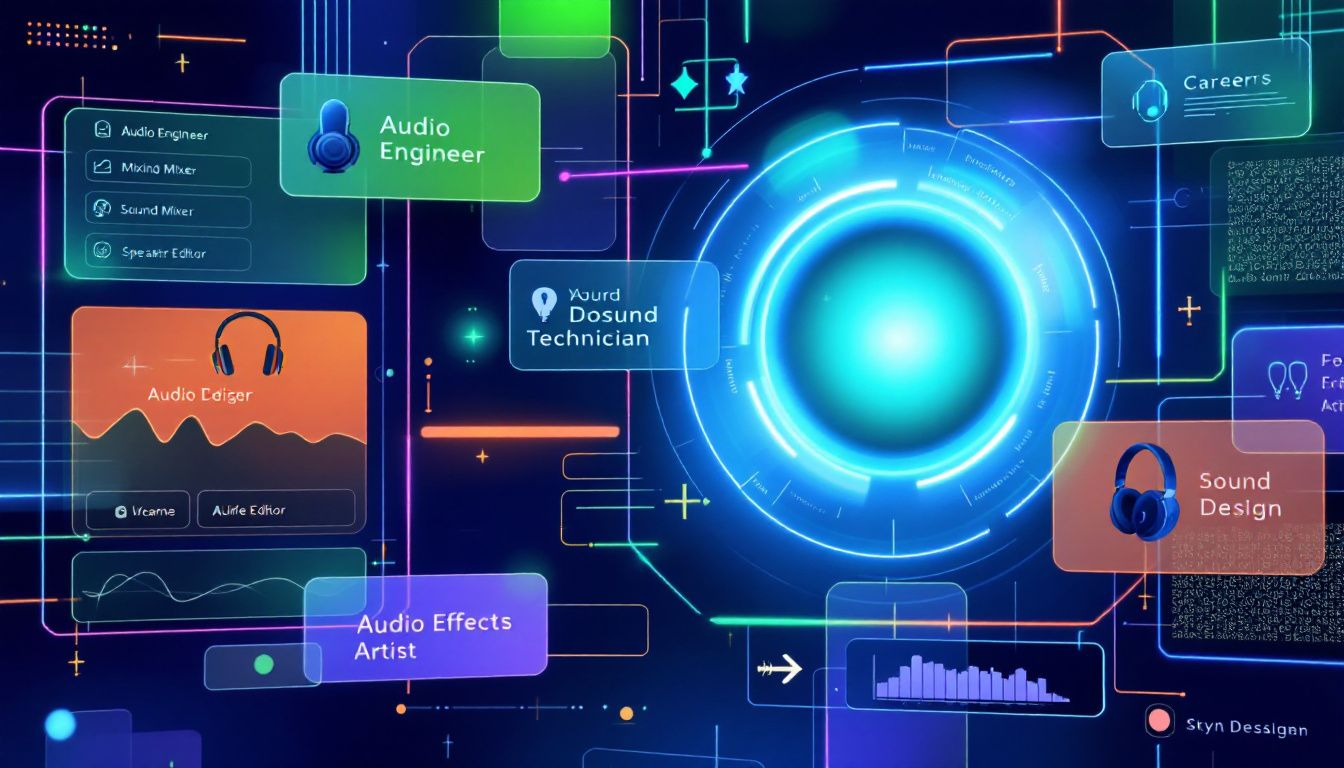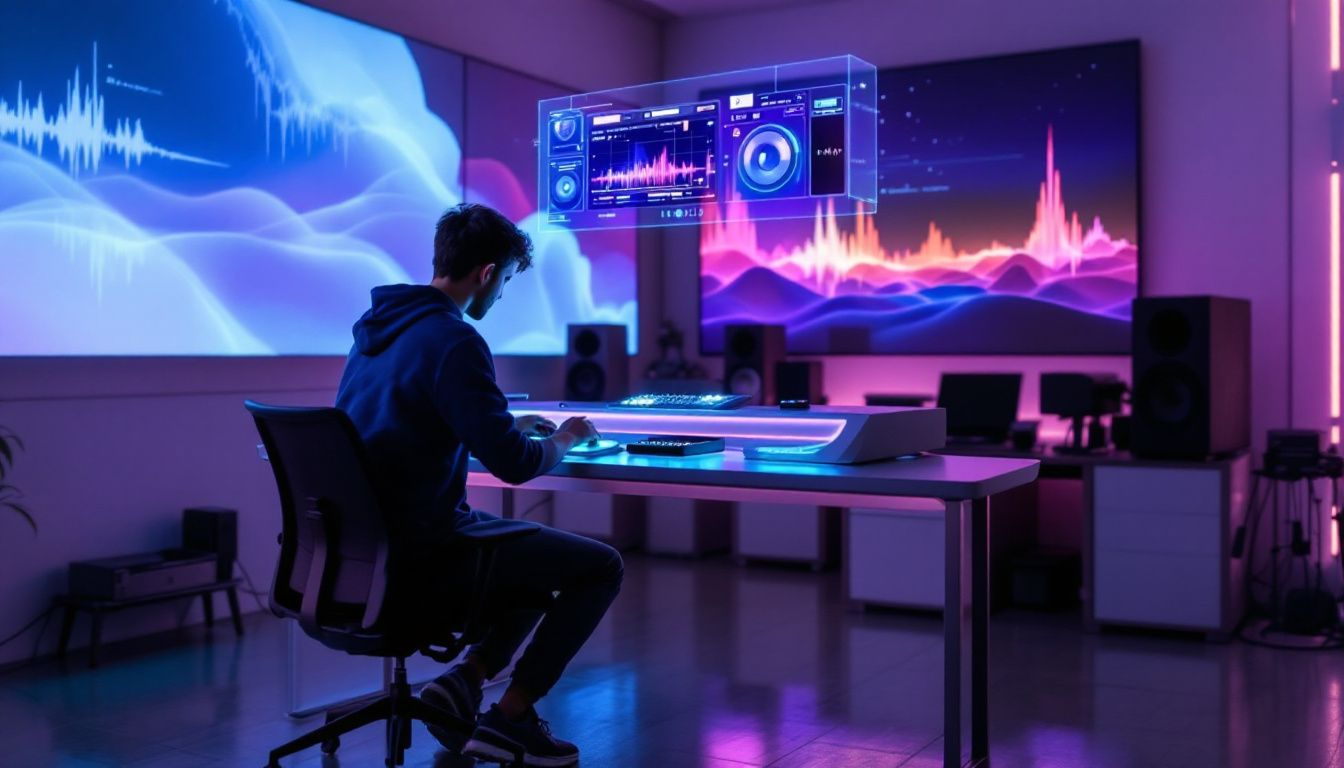
What top Sound Designing Course should offer for Audio Skills Online
Content
Are you looking to master the art of sound design? A top-notch sound designing course can equip you with the skills needed for careers in film, TV, video games, and more.
In this article, we’ll explore what an ideal sound designing course should offer, including detailed curriculum, hands-on learning, and career benefits.
Read on to discover how you can turn your passion for sound into a professional skill set.
Key Takeaways
-
The course provides a comprehensive curriculum covering audio recording, sound synthesis techniques, and practical skills necessary for sound design across various media.
-
Students engage in hands-on training with industry-standard software and tools, culminating in a final project that showcases their capabilities and serves as a portfolio piece.
-
Personalized mentoring from certified instructors and a supportive community enhances learning, providing tailored guidance and opportunities for collaborative growth in sound design.
Course Overview

A top online sound design course emphasizes the significance of sound in various media, including film, television, and video games. Sound is not just background noise; it’s a crucial element that enhances storytelling and immerses audiences in different worlds. Grasping the significance of sound is fundamental to mastering sound design.
The course curriculum is meticulously structured to cover all essential aspects of sound design courses. It includes modules on audio recording, engineering, and the manipulation of digital audio. The curriculum provides a solid foundation in both theoretical knowledge and practical skills. They are trained to create unique sounds that enhance storytelling in interactive and multimedia environments.
Hands-on experience is a cornerstone of the program. Students get hands-on training with industry-standard software and hardware, allowing them to navigate both analog and digital audio systems effectively. Combining theory and practice equips students for real-world demands in modern music production and sound design.
Topics Covered
In the world of sound design, variety is key. The course covers the creation of a wide range of sounds, including plucks, basses, leads, pads, growls, FX, drums, and keys, to help students create sound effects. This diversity ensures that students are well-versed in crafting sounds for different genres and media.
Sound synthesis programming techniques form a significant part of the curriculum. Students learn additive synthesis, waveshaping, and wavetable synthesis, among other techniques. These methods are taught using Pure Data, an open-source software that is highly regarded in the sound design community. This hands-on approach helps students understand the intricacies of sound creation from a technical perspective.
Practical skills are also a focal point. Lessons on sound recording and editing techniques provide students with the tools they need to capture and manipulate audio effectively. Students graduate with a robust skill set encompassing both creative and technical aspects of sound design.
Learning Methods
Learning sound design is an immersive experience, and this course ensures that students are fully engaged through hands-on training. From the start, practical knowledge in sound design tools and techniques is emphasized, enabling immediate application of learned skills. This approach ensures a dynamic and interactive learning process.
The final project plays a crucial role in the course. It allows students to demonstrate their skills by creating a comprehensive sound design piece. This project not only showcases their talent but also provides a tangible example of their work that they can present to potential employers or clients.
Throughout the course, students develop a specific language to articulate and critically assess their sound design work. This analytical approach is reinforced through assigned homework and feedback sessions, ensuring continuous improvement and mastery of sound design elements.
Certified Instructors
One of the standout features of this online course is its team of certified instructors. These experienced professionals bring a wealth of knowledge and real-world experience to the classroom. Many hold industry certifications, such as Ableton Certified Trainers, which adds significant credibility to the course.
Instructors play a pivotal role in guiding students through complex audio concepts. Their expertise guarantees high-quality education and practical insights directly applicable to sound design projects. They provide continuous support and mentorship, helping students navigate challenges and achieve their learning goals.
Instructors’ specialized knowledge and experience facilitate a deeper understanding of advanced sound design principles. Their real-world experience allows them to offer practical advice and tips that go beyond textbook learning, making the education process more enriching and effective.
Personalized Mentoring
Personalized mentoring provides tailored guidance based on individual interests in sound design. These sessions are integrated into the course structure, ensuring that students can apply their learning directly with expert support. This one-on-one attention helps refine their skills and address any individual challenges they might face.
Constructive feedback is a key component of the mentoring process. Students receive detailed critiques on their projects, which helps them understand their strengths and areas for improvement. This feedback loop enhances their grasp and practical application of sound design principles, fostering continuous growth.
Supportive Community
Building a supportive community is fundamental to the learning experience. Students are encouraged to engage in collaborative projects and support each other’s creative efforts, fostering a sense of belonging and mutual growth. Outside of class, students can ask questions and interact with peers, enhancing their learning outcomes through shared feedback and collaboration.
The involvement of industry professionals as mentors further enriches the community. Their insights and real-world experience provide valuable perspectives that inspire and motivate students. Engaging with these professionals helps students gain a deeper understanding of the sound design industry and build valuable connections.
Career Opportunities

Skills acquired in this course open up a variety of career paths across multiple industries. Sound designers can work in video games, film, TV, and advertising, among others. These fields offer unique opportunities to apply sound design skills creatively and impactfully.
In the film and TV sectors, a sound designer can specialize in roles such as dialogue editors, sound effects editors, or music editors. These positions require a keen ear and a deep understanding of how sound enhances storytelling. Experienced sound designers may advance to positions like audio directors, overseeing the entire audio production process.
A sound design career offers considerable flexibility. Professionals can choose to work as in-house employees or independent contractors, depending on their preferences and career goals. This flexibility enables work on diverse projects and collaboration with various teams.
An impressive portfolio is crucial for entering the sound design industry. This course helps students create a body of work that showcases their skills and creativity, making them attractive candidates for potential employers. Opportunities are abundant in companies ranging from game developers to virtual-reality firms.
Equipment Requirements
Excelling in sound design and audio engineering requires the right equipment. A laptop is a must-have, with both Mac and PC options being suitable for the course. Quality headphones, such as the Sony MDR7506, are recommended for precise audio work. These tools enable accurate hearing and analysis of projects.
Industry-standard software is also a requirement. Programs like Logic Pro and Ableton Live are integral to the sound design process, offering essential tools for audio manipulation. These platforms provide the functionality and flexibility needed for a music producer to create professional-level audio productions.
An audio interface like the Focusrite Scarlett is crucial for connecting microphones to computers and ensuring high-quality recordings. A solid listening setup is crucial for effective learning, allowing students to accurately hear the nuances of their work.
Final Project

The final own project is a pivotal part of the sound design course, allowing students to apply their learned skills in a comprehensive sound design piece. The project requires Examination Board approval to ensure it meets high standards.
Through the final project, students demonstrate their mastery of the course content by creating a unique and cohesive sound design piece. This project can be anything from a soundscape for a video game to a complete audio production for a film. The goal is to showcase their creativity and technical skills in a real-world context.
Students use industry-standard tools and techniques to create their final piece, emphasizing practical application of learned skills. The project serves as both a capstone to the learning journey and a portfolio piece for future careers.
Certification
Upon successful completion of the course, students receive a certification that validates their skills and knowledge. The certificate testifies to their hard work and dedication, helping them stand out in a competitive job market.
Summary
In summary, a top online sound design course offers a comprehensive education in audio skills, covering everything from basic principles to advanced techniques. With experienced instructors, personalized mentoring, and a supportive community, students are well-equipped to succeed in the sound design industry.
The career opportunities in sound design are vast and varied, and this course provides the foundation needed to excel in this field. By completing the course, students not only gain valuable skills but also a certification that validates their expertise.
Ready to take the next step in your sound design journey? Enroll today and start creating the sounds of the future!
Back to the Blog